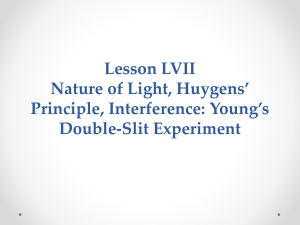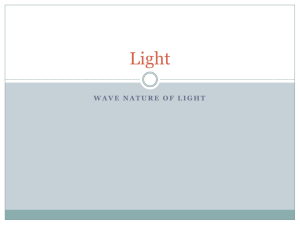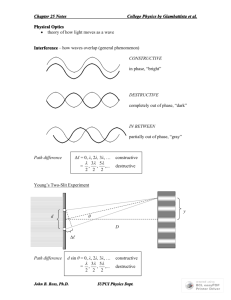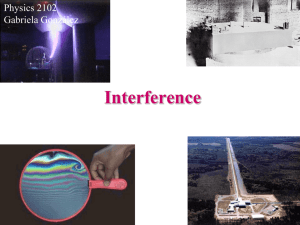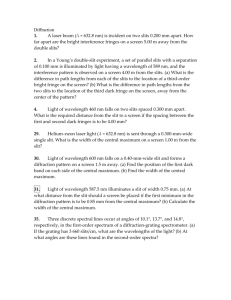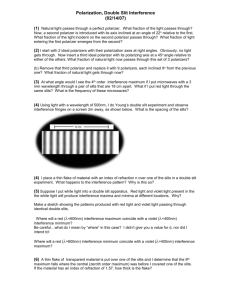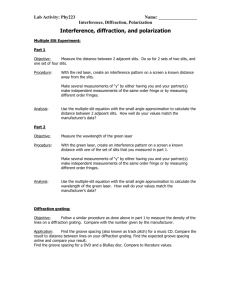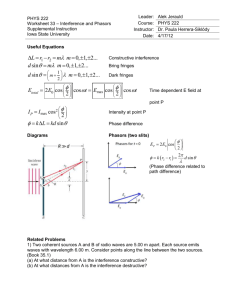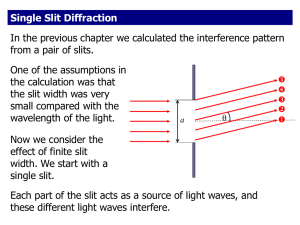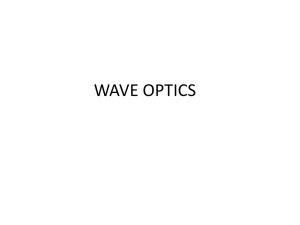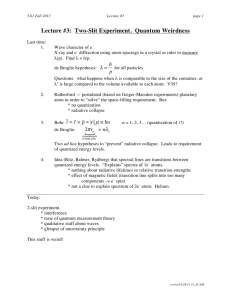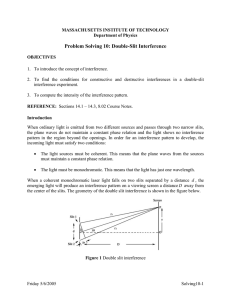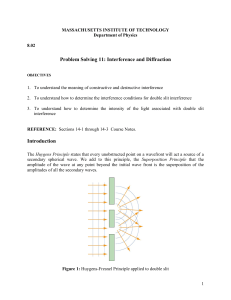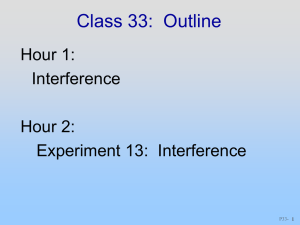1-22 Interference of Light
advertisement
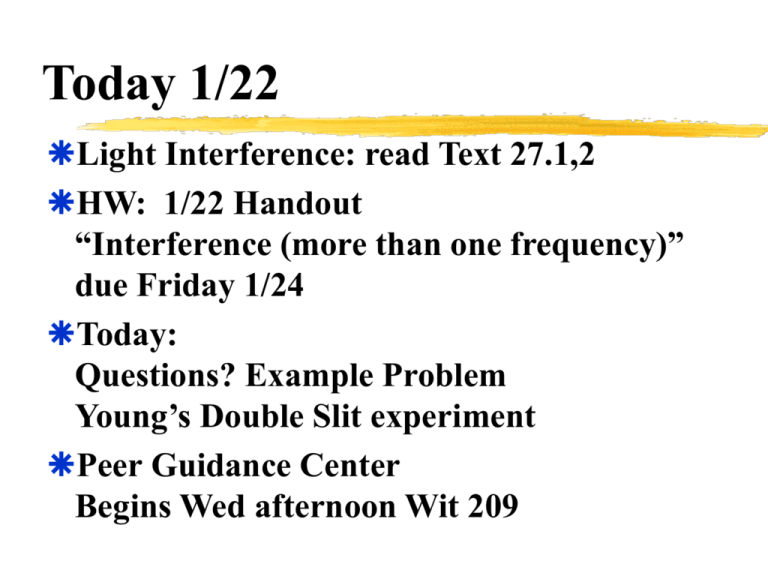
Today 1/22 Light Interference: read Text 27.1,2 HW: 1/22 Handout “Interference (more than one frequency)” due Friday 1/24 Today: Questions? Example Problem Young’s Double Slit experiment Peer Guidance Center Begins Wed afternoon Wit 209 A little review Waves Two types, transverse and longitudinal Wave speed depends only on the medium Period, Frequency, Amplitude--just like SHM v = f Interference Superposition-- adding waves It’s all about Path Length Difference, , and.. Sources “in” or “out” of “Phase” Example: What is the lowest frequency of sound that will produce destructive interference here? PL1 = 2.0m Two sources emit in phase PL2 = 2.2m Young’s Double Slit (like two speakers) Wave crests c d c d c d c d c Wave troughs Single frequency source In phase at the slits Dark and bright “fringes” on a screen Young’s Double Slit (like two speakers) Wave crests Wave troughs Single frequency source In phase at the slits Does the pattern expand or contract when: -the slits move closer together? -the wavelength increases? Always true for any interference problem Sources In Phase: Constructive if PLD = m Destructive if PLD = (m + 1/2) PLD = “path length difference” Sources Out Constructive if PLD = (m + 1/2) Destructive if PLD = m of Phase: m = 0, 1, 2, 3,… (I used “n” the other day) Two slit geometry (screen far away) PLD = d sin (d = slit separation) d d PLD (close enough) Screen Two slit geometry PDL = d sin (d = slit separation) d Screen d sin = m constructive interference d sin = (m+ 1/2) destructive interference When the sources (slits) are “in phase” A simpler picture Two slits very close together (d) Screen very far away d sin = m constructive interference (L) d sin = (m+ 1/2) destructive interference When the sources (slits) and “in phase” The m’s 0 “zeroth order” fringe 1 “first order” fringe 2 “second order” fringe d sin = m d sin = (m+ 1/2) m=2 m=1 m=1 m=0 m=0 m=0 m=1 m=1 m=2 Distance between fringes, y tan = y/L L m=2 m=1 m=1 y m=0 m=0 m=0 m=1 m=1 m=2 Example: m=2 m=1 m=1 m=0 5mm m=0 2m m=0 m=1 m=1 Light with a wavelength of 500 nm passes m=2 through two closely spaced slits and forms an interference pattern on a screen 2m away. The distance between the central maximum and the first order bright fringe is 5 mm. What is the slit spacing? The light is in phase at the slits. tan = 5mm / 2m = 0.14° d sin = m = 1(500 nm) d = 0.2 mm Example: Twin radio antennas broadcast in phase at a frequency of 93.7 MHz. Your antenna is located 150 m from one tower and 158 m from the other. How is the reception, good or bad? vwave = c = 3108 m/s PLD = 8 m v=f m 0 1 2 3 4 Does this equal some m or some (m + 1/2) ? = 3.2m m 0 3.2m 6.4m 9.6m 12.8m Make two lists (m + 1/2) 1.6m 4.8m 8.0m 11.2m 14.4m The condition is met for destructive interference. Reception at that location is bad.
